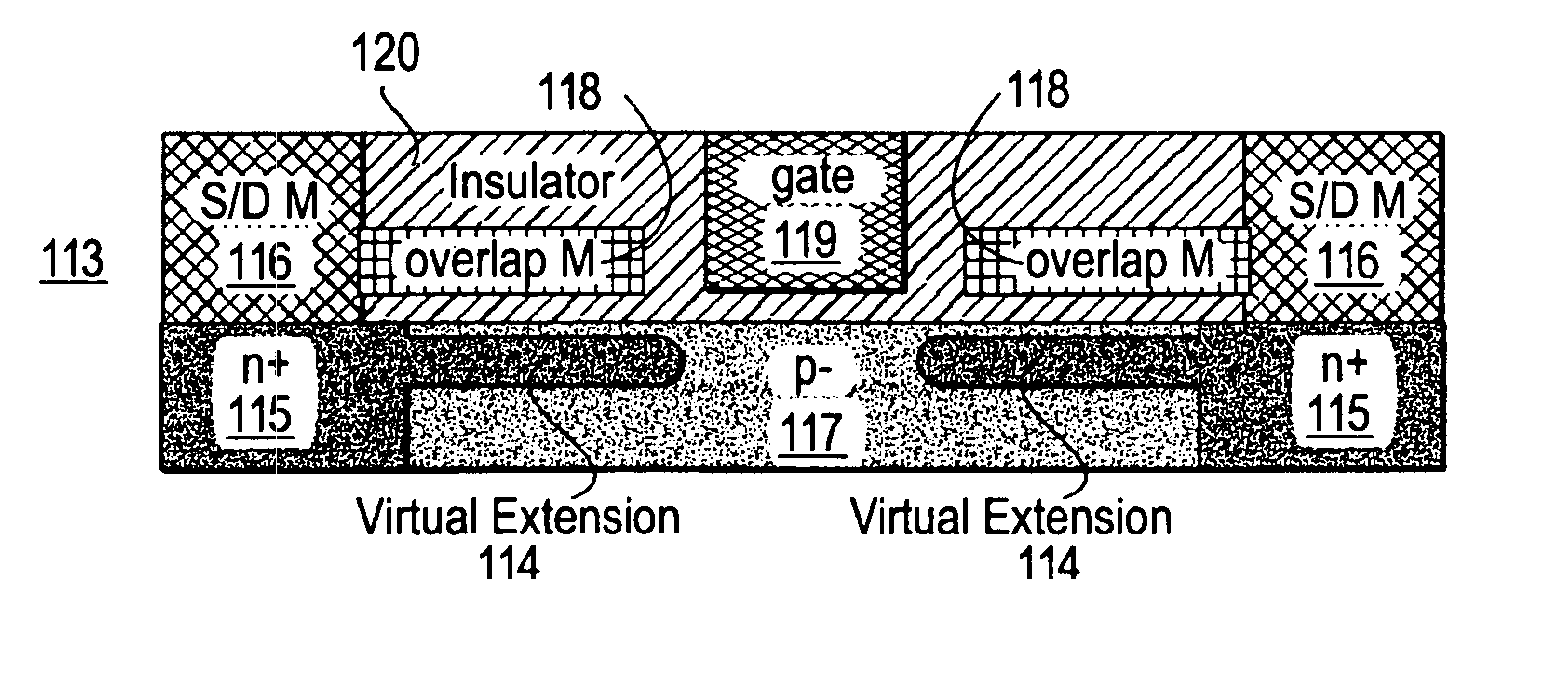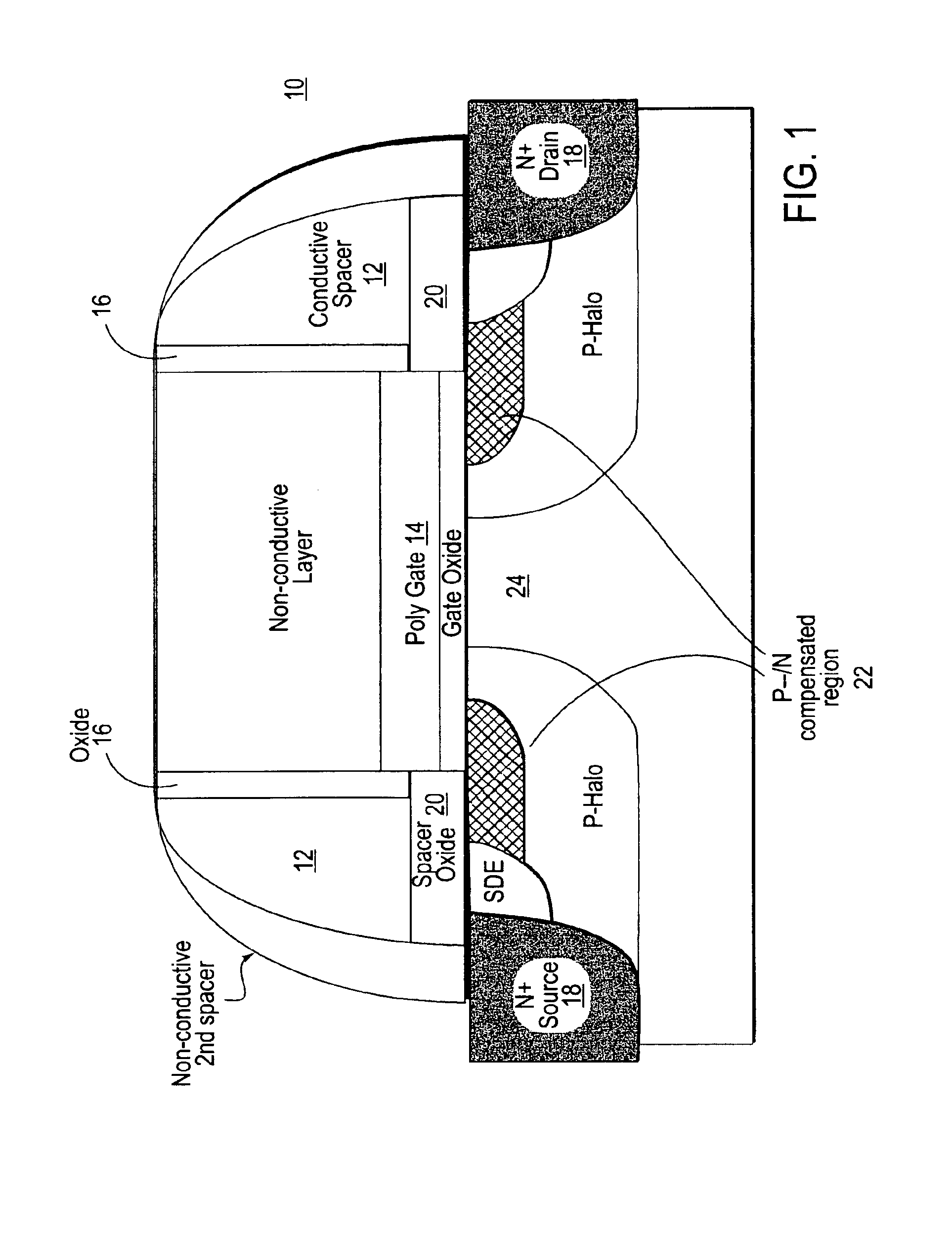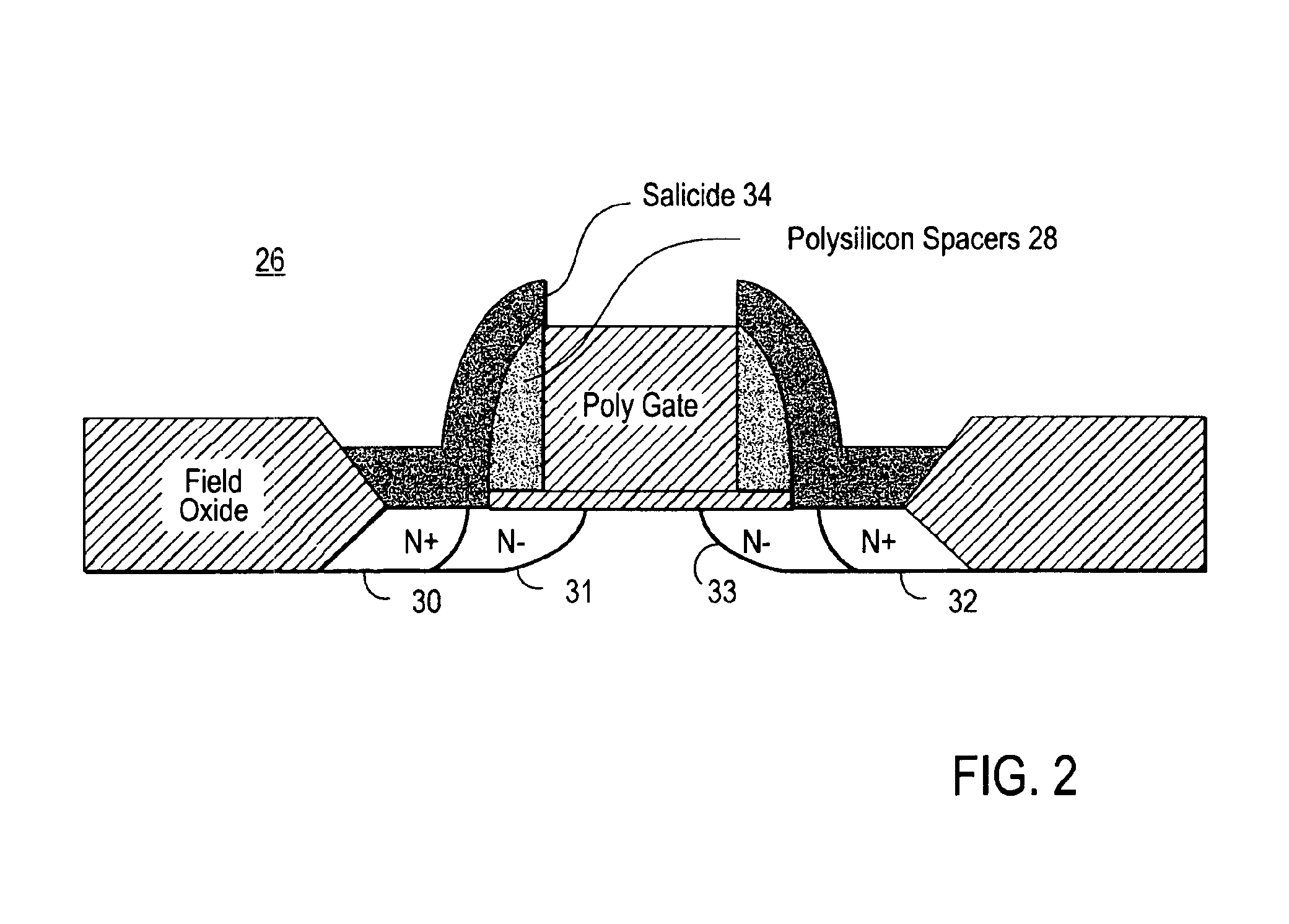Transistor with workfunction-induced charge layer
a charge layer and transistor technology, applied in the field of field-effect transistors, can solve the problems of limiting the peak doping level and the abruptness of the doping profile, reducing the on-resistance, and increasing the short-channel effect, so as to achieve the effect of enhancing the conductivity between the semiconductor channel and the channel tap
- Summary
- Abstract
- Description
- Claims
- Application Information
AI Technical Summary
Benefits of technology
Problems solved by technology
Method used
Image
Examples
Embodiment Construction
[0045]As is discussed in detail below, the present inventors have developed a FET that includes an extension region which is sufficiently shallow, has a high charge density for low resistance, does not suffer from the decrease in performance (in particular switching speed) as has been reported for other FETs, and does not add significantly to circuit complexity. More specifically, disclosed herein is an electrical switching device (a transistor) that includes one or more conductors (which often will be a metal), each of which overlaps a region of semiconductor between a channel tap (for example, source or drain) region and the channel region. This region of semiconductor, part or all of which is overlapped by the conductor, is a so-called “extension region”. Furthermore, each of these conductor(s) is locally separated from the semiconductor it overlaps by an insulator. Each conductor is electrically isolated from the gate(s) and is chosen to have a workfunction that will induce a de...
PUM
 Login to View More
Login to View More Abstract
Description
Claims
Application Information
 Login to View More
Login to View More - R&D
- Intellectual Property
- Life Sciences
- Materials
- Tech Scout
- Unparalleled Data Quality
- Higher Quality Content
- 60% Fewer Hallucinations
Browse by: Latest US Patents, China's latest patents, Technical Efficacy Thesaurus, Application Domain, Technology Topic, Popular Technical Reports.
© 2025 PatSnap. All rights reserved.Legal|Privacy policy|Modern Slavery Act Transparency Statement|Sitemap|About US| Contact US: help@patsnap.com



